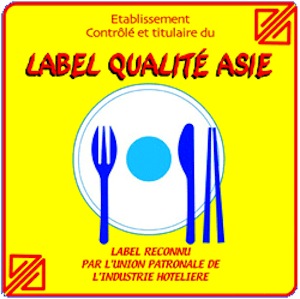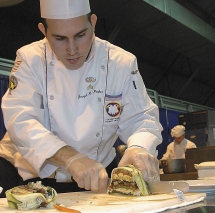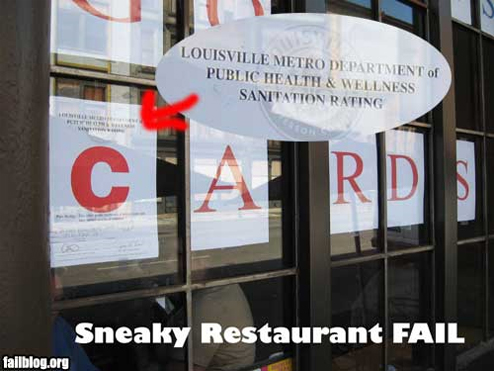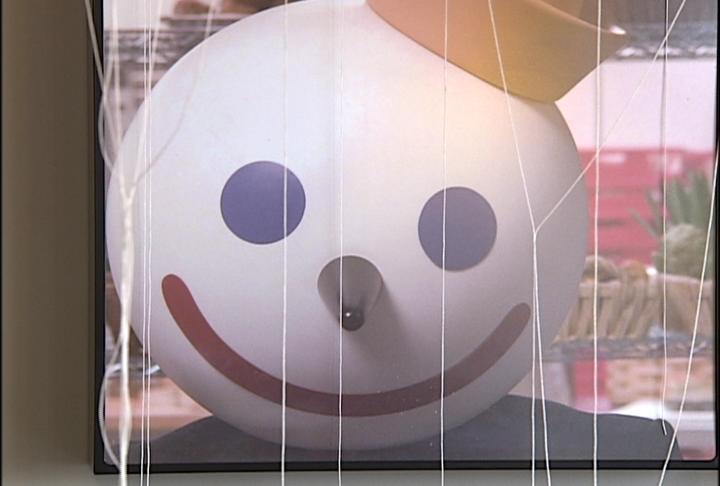There’s really nothing like high school cafeteria Jell-O – especially if that Jell-O mix has mouse poop in it or near it.
 That’s exactly what was found as the kitchens at James Buchanan High School and Middle School in Pennsylvania failed the most recent health department inspections, with the state citing mouse droppings near food and other violations.
That’s exactly what was found as the kitchens at James Buchanan High School and Middle School in Pennsylvania failed the most recent health department inspections, with the state citing mouse droppings near food and other violations.
Both schools were cited for not having an adequate space for employees to wash their hands. Mouse droppings were found in both locations.
Justin Flemming, spokesman for the Department of Agriculture, said the droppings were a small amount in a contained area. In the report at the middle school it states open bags of Jell-O mix were "adulterated" by the droppings.
Tuscarora Business Manager Eric Holtzman said, however, that the mixes were in sealed bags that were contained in a box. Holtzman said the droppings were in the box but were not found in the bags of mix.
"Mice in the country are a problem," said Gertrude Giorgini, who operated the kitchen for Tuscarora for 23 years before retiring eight years ago.
Giorgini also questioned the district’s decision hiring a food management company, rather than keep food services in house. She said that many management companies won’t keep as close of an eye on food safety and cleanliness at a facility as people who are employed by the school district.
"You never want to be written up by the Board of Health," Giorgini said.

 colored signs on doors like the medical officer of health recommended 40 months ago, it would have happened faster. Just like it did in Toronto, all those years ago.
colored signs on doors like the medical officer of health recommended 40 months ago, it would have happened faster. Just like it did in Toronto, all those years ago. to know a number of food-safety types based in the military. They’ve got some awesome stuff and people.
to know a number of food-safety types based in the military. They’ve got some awesome stuff and people. The job is easier in New York, because,
The job is easier in New York, because, 600, but that ain’t worth much if an outlet allows raw shit to flood into the kitchen.
600, but that ain’t worth much if an outlet allows raw shit to flood into the kitchen. .jpg) BBC News reported
BBC News reported The FSAI today re-emphasized that it is unacceptable that food businesses were continuing to breach food safety laws and warned all food business operators to place robust food safety measures and hygiene practices top of their agenda for the new decade or face the full rigors of the law being imposed.
The FSAI today re-emphasized that it is unacceptable that food businesses were continuing to breach food safety laws and warned all food business operators to place robust food safety measures and hygiene practices top of their agenda for the new decade or face the full rigors of the law being imposed. The survey is corroborated by the National Pest Technicians Association (NPTA), which found a 15% year-on-year increase in treatments in local authorities for rat infestations.
The survey is corroborated by the National Pest Technicians Association (NPTA), which found a 15% year-on-year increase in treatments in local authorities for rat infestations.
 Food safety culture is a set of values wherein food safety risks are openly identified, discussed, and addressed. What this means is that anyone who works there — from manager to dishwasher — knows that paper towels can reduce risks so they refill the dispenser. Food safety is supported from the organization but it’s the front-line folks who hold the health of patrons in their hands. An organization like Aramark needs to be building the food safety culture capacity behind the scenes, not just touting how clean everything looks now.
Food safety culture is a set of values wherein food safety risks are openly identified, discussed, and addressed. What this means is that anyone who works there — from manager to dishwasher — knows that paper towels can reduce risks so they refill the dispenser. Food safety is supported from the organization but it’s the front-line folks who hold the health of patrons in their hands. An organization like Aramark needs to be building the food safety culture capacity behind the scenes, not just touting how clean everything looks now.